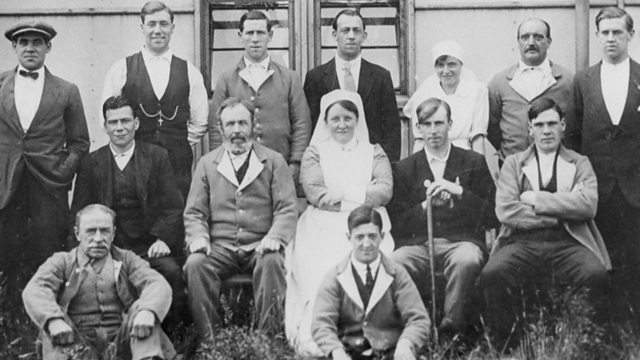Brindley Heath, Staffordshire: Mental Health Treatments
Treating a condition that was in its prime of being acknowledged
During World War One, it became clear to many experts β both in the medical world and the military β that large numbers of combatants could not cope with the strain of warfare.
By the end of war, the army had dealt with 80,000 cases of 'shell shock'. Among the places where treatment was offered was Brindley Heath in Staffordshire. A hospital was built to treat wounded soldiers and troops taken ill at the nearby military training camps. It also treated soldiers suffering from shell shock until 1924.
Shell shock itself has been described as a βdifficult termβ as itβs an umbrella term for a range of war neuroses. The man who coined the term, a medical officer called Charles Myers, became unhappy with the term as many men suffered the symptoms of shell shock without having even been on the front lines. Medical officers used other terms such as βdisordered action of the heartβ and hysteria.
Some treatments were experimental. Electric shock treatments were tried, as were talking therapies, rest treatments and hypnosis. Reportedly, during WW1, four-fifths of men who had entered hospital suffering shell shock were never able to return to military duty.
Location: The Cannock Chase Military Pensions Hospital, Brindley Heath, Rugeley, Staffordshire WS15 2UH
Image: Wounded soldiers at the Ministry of Pensions Hospital, Brindley Heath. Photograph courtesy of the Museum of Cannock Chase. Copyright unknown.
Duration:
This clip is from
Featured in...
![]()
ΒιΆΉΤΌΕΔ Radio Stoke—World War One At ΒιΆΉΤΌΕΔ
Places around Stoke that tell a story of World War One
![]()
Medicine—World War One At ΒιΆΉΤΌΕΔ
Hospitals, medical pioneers and the nursing contribution
More clips from World War One At ΒιΆΉΤΌΕΔ
-
![]()
The loss of HMY Iolaire
Duration: 18:52
-
![]()
Scotland, Slamannan and the Argylls
Duration: 07:55
-
![]()
Scotland Museum of Edinburgh mourning dress
Duration: 06:17
-
![]()
Scotland Montrose 'GI Brides'
Duration: 06:41







